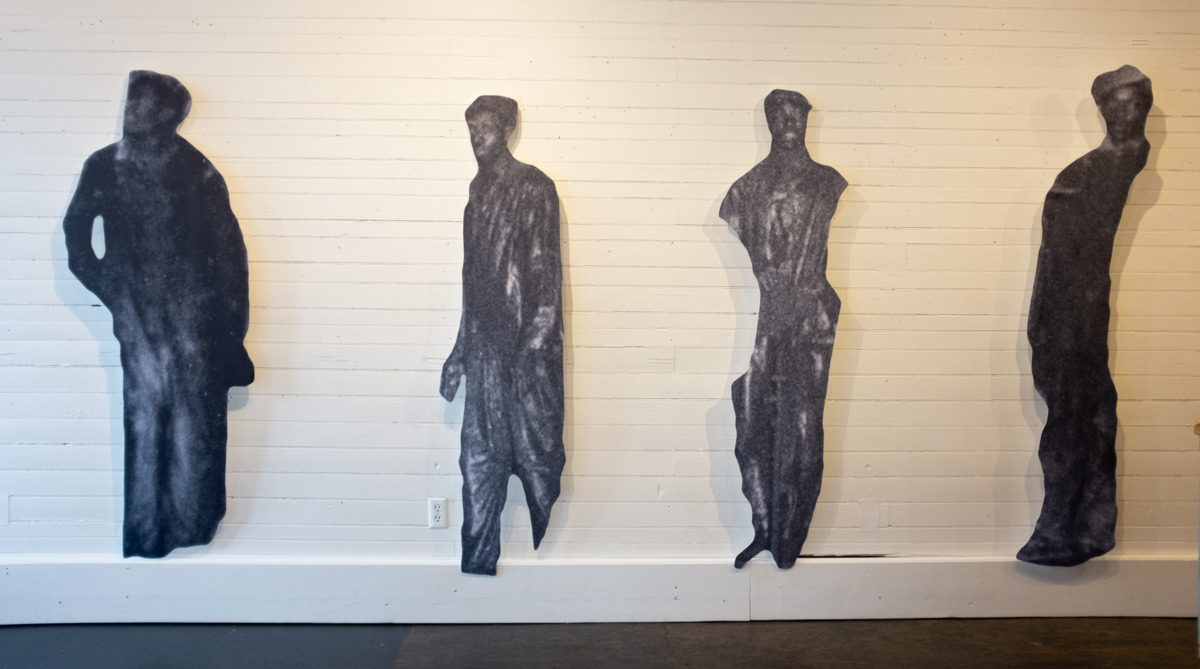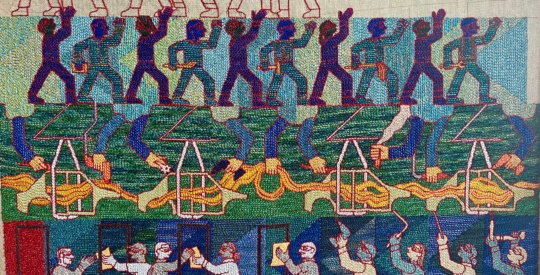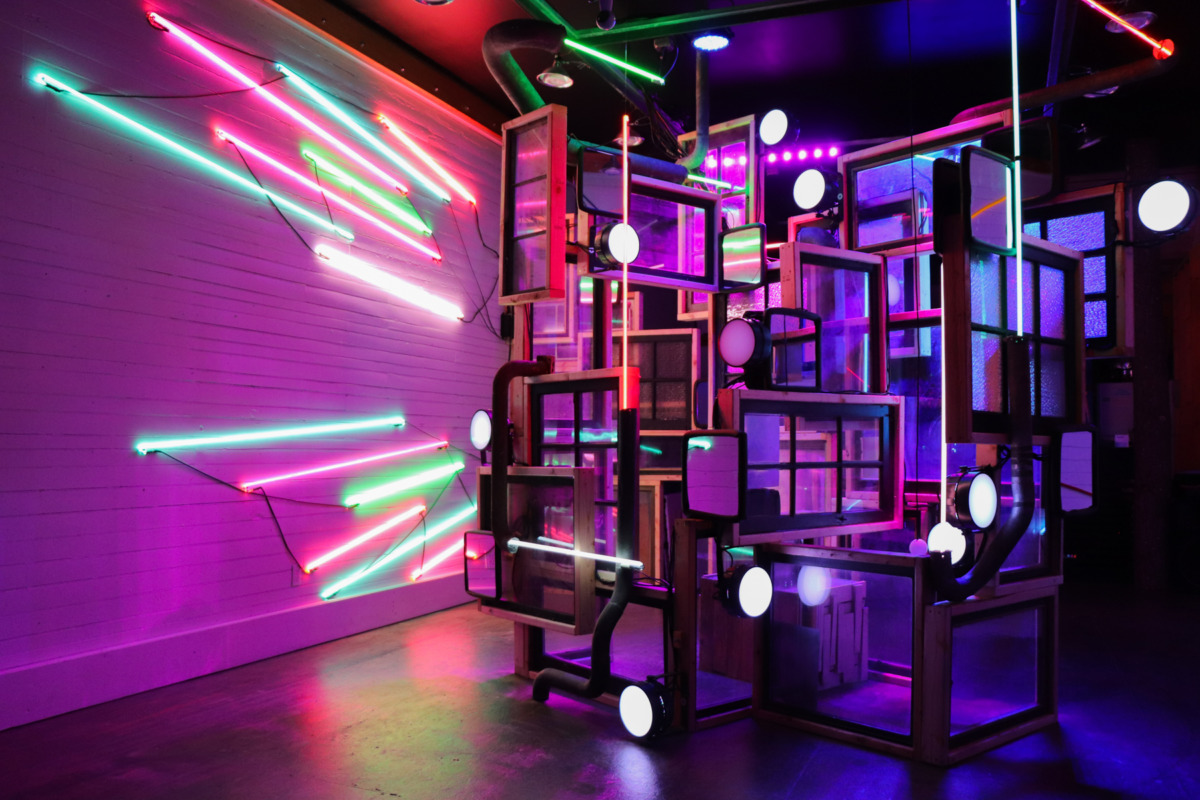
Location/Address: 218 East Avenue in Thomas, WV.
Hours: Variable based on exhibition. Currently 11am-6pm on Wednesday–Saturday
Website: https://gradientprojects.org/
Founded & Operated by: Nathan J. Baker, Kimberly Joy Trathen, John Ryan Brubaker
Opened: May 2018
Most Recent Exhibitions: Joshua Challen Ice: Effervescent Hypnotics, John Ryan Brubaker: Here & Nowhere Else, Raymond Thompson Jr.: Appalachian Ghosts, Oddy Gumption: Strange Visitor
Bryn Evans: There’s an Instagram post on your profile from 2019. It reads, “Alternative spaces are alternative societies, constructing parallel histories. Alternatives have been associated with the young, new, or unusual, but as the concept has grown older, they have also become wise and prophetic. Art is the action of consuming the self and the supreme manifestation of humans. Agitate the arts and powers shake. Alter your life and the world will change.” I love that second to last sentence. Can you share how this statement contributes to Gradient Projects’ mission and what you see as GPS’s role in agitating the arts?
Gradient Project Space: This quote is from the essay “Alter the Native” by Papo Colo, from the book Alternative Histories: New York Art Spaces, 1960-2010. We came across it while reading up on the history of artist-run spaces and the role they play in local communities and the art world at large.
At GPS we focus on the concept of ‘project space’ more than a gallery and try to maintain flexibility in how the space and initiative runs. We see our mission as that of an amplifier, agitator, facilitator and disseminator of creative work in whatever form that takes. We’ve hosted poetry readings, live music, live-streams (during the initial lock-down days), theater, installations, film screenings, sweaty EDM birthday parties…all in addition to our exhibition programming. We have the honor of housing and hosting the vital transition point of the creative process, when works move from the phase of being created to the phase of being experienced. That is when art begins altering the world by way of the people who take it in… exciting stuff.
In terms of how this makes ‘powers shake’ … any focus on art and expression can become a political or activist action. Helping to instigate ‘the creative’ inherent in people can build both community solidarity and personal strength to make a group more cohesive and mutually supportive. For example, and on a more explicit level, Raymond Thompson Jr.’s exhibition Appalachian Ghosts brought conversations about the plight of hundreds of Black migrant laborers who died due to overt neglect on the part of Union Carbide and its subsidiaries while digging the Hawk’s Nest Tunnel. Working the gallery during this show we saw local teachers and coal miners learning of a much-overlooked historical tragedy here in West Virginia. These kinds of engagements build solidarity across cultural lines which can play a profound role in disturbing power structures.
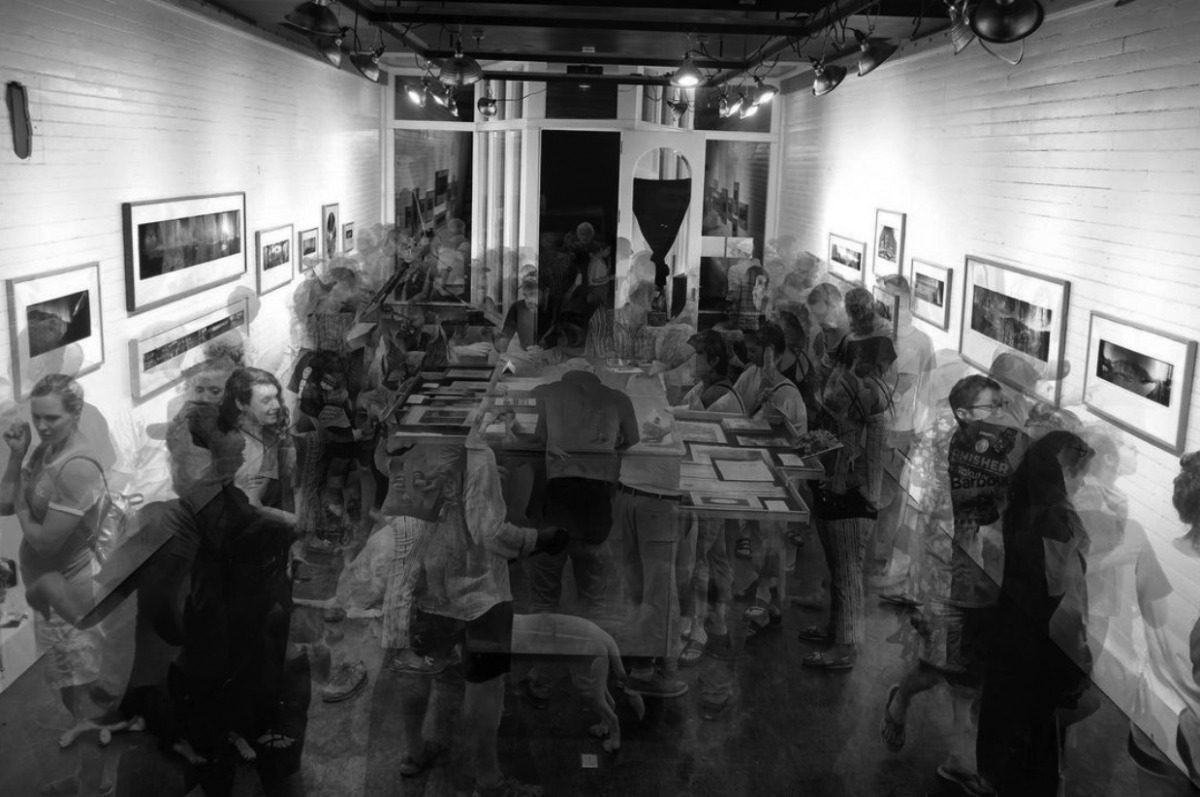
BE: The GPS website acts like a portal into a subset of West Virginia’s alternative art community, a literal GPS where visitors can teleport and experience the incredible work of folks like Lisa Elmaleh and Oddy Gumption. For those who come across the arts initiative, whether virtually or in person, where would you point them to next?
GPS: We started GPS because we felt the region lacked alternative spaces that focused on solo exhibitions and contemporary art. Thomas is a town of roughly 600 people with six galleries, three maker studios, multiple live music venues, a radical bookstore and a young, rowdy theater company. We are extremely lucky to be surrounded by so many inspired folks who live here amongst us. The three of us have been working in a group studio for the last ten years that shares a building with Invisible, which is a good place to begin to engage artists living and working in our community. From there, a walk down the street can lead to much discovery.
Beyond our city limits, the alternative art culture in West Virginia is still rather divergent and underground. We’d recommend catching a performance of the Travelin’ Appalachians Revue, keeping an eye out for the West Virginia invitational shows at the Juliet Art Museum and stopping into Taylor Books in Charleston, or Clientele Studios in Wheeling, to see who you might encounter.
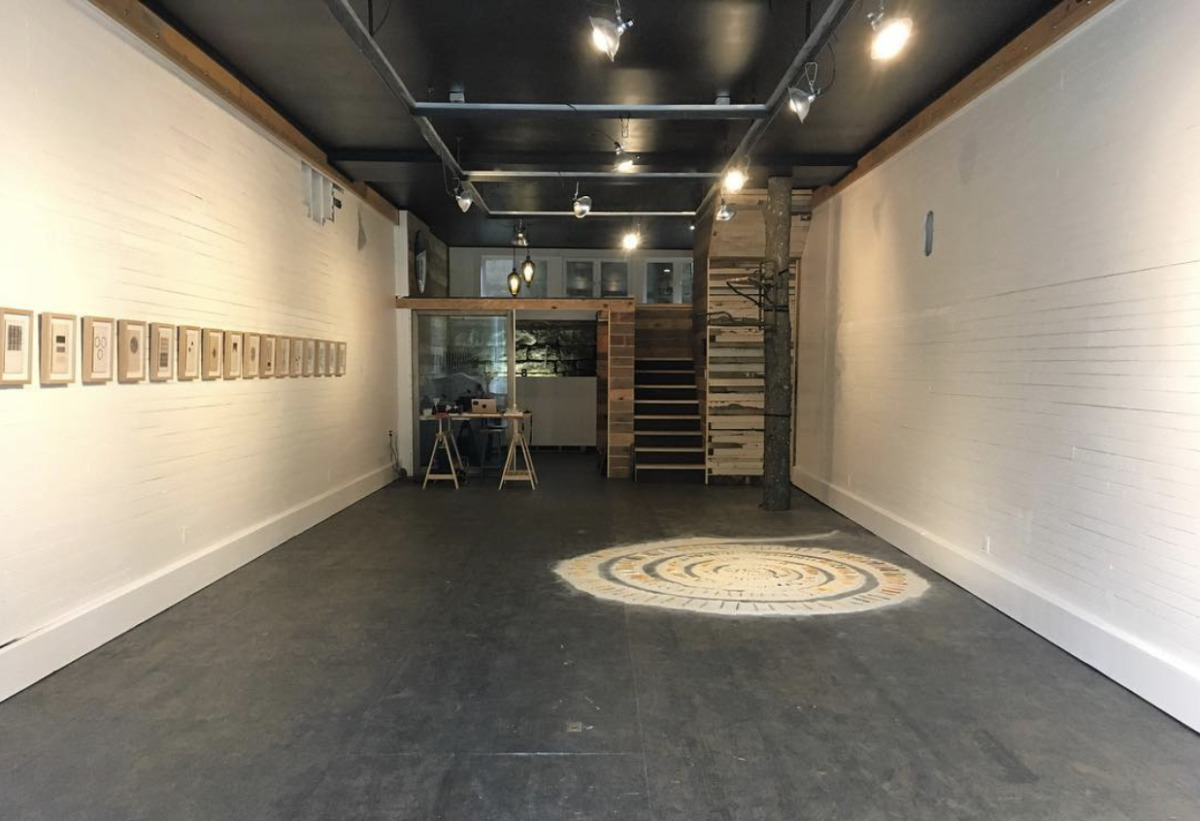
BE: In addition to Gradient Projects, y’all have your own art practices. How does running an art space inform your work as artists? How has your practice informed or contributed to GPS?
Kimberly Joy Trathen: I’m primarily a textile artist working with reclaimed leather and fabrics. Until recently, I focused on functional work such as bags and accessories, but I’m slowly transitioning to work more in contemporary art mediums. Running Gradient has informed my foray into two-dimensional and installation-based art by giving me space to imagine my work more experimentally and experientially. I’ve had the opportunity to stage a solo exhibition in the space and to collaborate in group shows, both of which have expanded my technical understanding of how exhibitions are put together. Showing at GPS has also brought awareness to how folks engage my work in a gallery context. On top of this, we are able to host artists from larger cultural centers like Pittsburgh and Washington D.C, which sparks mutual learning and builds our community network well beyond the limits of Thomas. And I get to do this all in the company of my two brilliant cohorts, Nathan and JRB!
John Ryan Brubaker: Running GPS has informed my personal practice (and vice-versa) on a number of practical levels. I’ve come to see the vast range of how artists communicate with galleries. I’ve had opportunities to collaborate on exhibition design and programming across a variety of mediums. I’ve had a comfortable and controllable space to try out exhibitions that were to be shown elsewhere. I’ve learned the pressures and excitement of installing shows, and I’ve gotten much better at speaking about other artists’ work. At this point, the line between my personal practice and the work of running GPS is blurry at best. The space can feel as much like a collaborative studio as it does a gallery or a performance venue. This leads to me to think outside my comfortable mediums and engage with other artists less as a host and more as a constant collaborator.
Nathan J. Baker: For me, running an art space has helped to demystify what an artist even is. The opportunity to represent and work with exceptional individuals that create art humanizes the whole process — which is to say that it is pulled out of the murky esoteric cloud and made more practical, tangible, and accessible. This grants me a bit more calm-confidence in decisions that arise in my own process. Not that any of this makes creating meaningful content any easier — not at all that — but getting a glimpse of other artists’ practices does make it seem possible.
Much of my work engages found and salvaged items, which has informed Gradient Project Space in a very literal and physical way. We have done nearly all of the design and construction in GPS ourselves, so the re-purposing of what is available has contributed to an architecture that features simplicity, flexibility, and an honesty in material representation. In addition, I would suggest that training oneself to see utility and value in that which does not obviously contain either, facilitates openness to alternative paths – to the unknown.
